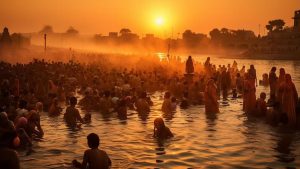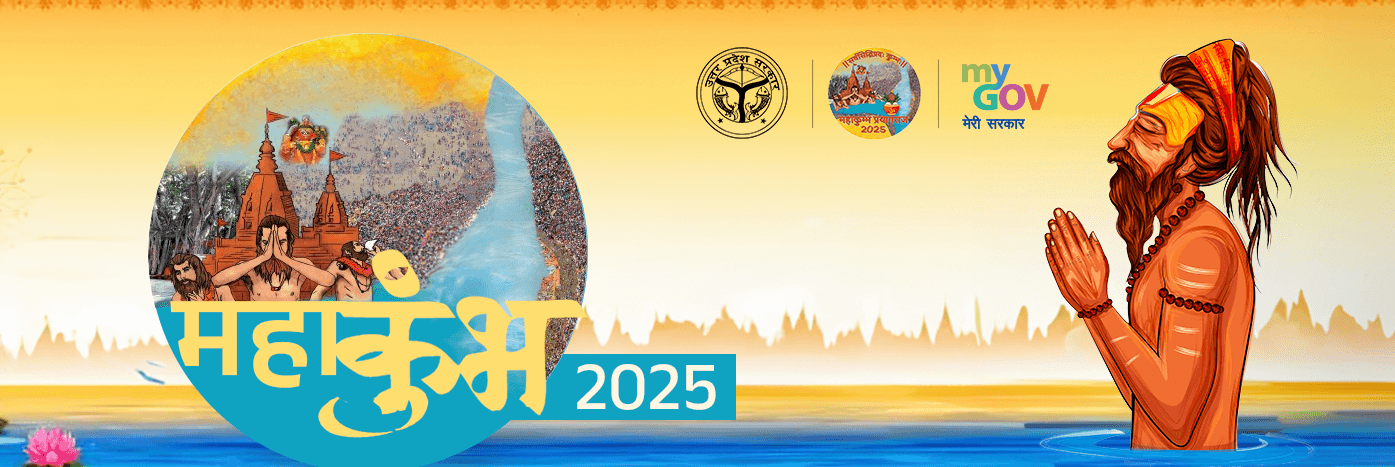Mahakumbh, the largest religious gathering in the world, is nearing its grand conclusion tomorrow, coinciding with the auspicious occasion of Shivratri. For millions of devotees, the Mahakumbh is not just an event but a spiritual journey, and the closing day marks the culmination of months of intense preparation, devotion, and collective energy. As we reflect on the Mahakumbh 2025, it stands as a resounding success, bringing together diverse communities from across the globe to celebrate faith, spirituality, and unity.
For the past few weeks, Prayagraj has been transformed into a vibrant spiritual center, teeming with millions of devotees, pilgrims, saints, and seekers from all corners of the world. Now, as the last ceremonial rituals take place, the city prepares to bid farewell to the historic event that has brought people together in a display of devotion, culture, and spirituality.
The Mahakumbh, one of the largest religious gatherings in the world, has been a symbol of unity and faith, a convergence of people from different backgrounds, cultures, and traditions. The end of this sacred journey marks not just the conclusion of a festival, but the culmination of an unforgettable spiritual experience for those who participated.
What is Mahakumbh?
The Kumbh Mela is a centuries-old religious event in Hinduism, held at four different locations in India: Prayagraj (formerly known as Allahabad), Haridwar, Ujjain, and Nashik. The Mahakumbh, considered the most auspicious of the Kumbh Melas, takes place once every 12 years at one of these sites, in a rotating cycle.
The festival is rooted in the ancient mythological tale of the churning of the ocean (Samudra Manthan), during which the gods and demons fought over the nectar of immortality. During this event, drops of the nectar are believed to have fallen at four places—Prayagraj, Haridwar, Ujjain, and Nashik—giving rise to the Kumbh Mela at these locations. The Mahakumbh marks the most spiritually powerful and significant of these gatherings.
The Mahakumbh, with its scale and grandeur, is not just a religious event; it is a symbol of unity, peace, and the shared human experience. Amidst the noise and chaos of modern life, this gathering provides an opportunity to disconnect from the material world and reconnect with the divine and the community. It is a reminder that we are all part of something much greater than ourselves.
KEY HIGHLIGHTS
-
Devotional Processions and Rituals
One of the most vibrant aspects of the Mahakumbh is the grand processions of sadhus, saints, and devotees. The processions are an awe-inspiring sight, with the “Naga Sadhus” (naked ascetics) leading the way. The chanting of mantras, the playing of drums, and the spiritual fervor of the crowd create a captivating atmosphere that fills the air with devotion.
-
The Shahi Snan
The Shahi Snan is the highlight of the Mahakumbh, where millions of people take a holy dip in the river at the most auspicious times. The event is marked by a sense of unity, as people from all walks of life, irrespective of caste, creed, or nationality, join together in the river. The water is believed to have divine properties, and the act of bathing in it is said to purify the soul.
-
Spiritual Discourses and Congregations
Throughout the event, spiritual leaders and gurus from across India and the world hold discourses, satsangs, and yajnas (sacred rituals). The Mahakumbh serves as a melting pot of philosophies, where various spiritual traditions come together in harmony, offering teachings on self-realization, meditation, and the path to inner peace.
-
Cultural Performances
While the focus of the Mahakumbh is primarily spiritual, it also serves as a platform for showcasing India’s rich cultural heritage. Devotional music, classical dance performances, and folk art are part of the event, creating an environment of divine celebration. Artisans and vendors selling religious items, clothing, and traditional crafts add to the cultural vibrancy.
-
Global Participation
The Mahakumbh has transcended national borders, with people from various parts of the world traveling to India to experience the event. This brings a unique multicultural aspect to the event. Pilgrims from different countries, cultures, and backgrounds unite in their shared spiritual aspirations, making the Mahakumbh a truly global event.
A Well-Organized Event: Logistics and Safety
While the Mahakumbh is a grand spiritual event, it is also an immense logistical undertaking. The success of Mahakumbh 2025 was made possible by a remarkable display of planning, coordination, and execution. The administration, led by various state and central agencies, worked tirelessly to ensure that the event was safe and accessible for all.
With millions of people flocking to Prayagraj, concerns regarding crowd management, sanitation, and health were paramount. The government took extensive measures, including setting up sanitation facilities, temporary accommodation, medical camps, and ensuring smooth transportation. Special arrangements were made for elderly pilgrims and people with disabilities, ensuring that everyone could participate with comfort and dignity.
The Role of Technology in Mahakumbh 2025
In this digital age, the Mahakumbh has evolved, incorporating modern technology to enhance the experience for devotees. High-tech monitoring systems, AI-driven crowd management tools, and drones were employed to ensure safety. Social media and live streaming platforms also played a significant role in allowing people from around the world to witness the proceedings in real-time.
Virtual reality (VR) experiences and online donation systems made it easier for those who could not attend to take part in the spiritual journey from afar. The fusion of tradition with technology ensured that the message of the Mahakumbh reached a global audience.
Farewell, Mahakumbh 2025
As the event concludes tomorrow on Shivratri, one of the most sacred nights in the Hindu calendar, the spiritual significance of this day adds another layer of depth to the Mahakumbh. Shivratri, the night of Lord Shiva, holds immense importance, and for many devotees, the chance to immerse themselves in this divine energy during the Mahakumbh is a once-in-a-lifetime opportunity.
Though the physical event may be coming to an end, the legacy of the Mahakumbh 2025 will endure. For many, this gathering was a turning point—a moment of spiritual awakening that will continue to shape their lives. The lessons learned, the wisdom shared, and the bonds formed during the event will remain a source of inspiration for years to come.
The Mahakumbh 2025 will be remembered as a moment when humanity came together in the name of spirituality, faith, and tradition. And while this chapter is ending, the journey toward inner peace and spiritual awakening continues for all those who experienced the magic of the Mahakumbh.
In conclusion, Mahakumbh 2025 was not just a spectacle; it was an embodiment of India’s timeless spiritual heritage. The event’s success in terms of participation, safety, and organization reflects the unifying power of faith, and it will continue to inspire and enlighten future generations of devotees. Tomorrow, as we celebrate Shivratri, let us remember the sacred journey that has unfolded over the last few weeks, and the blessings that it has bestowed upon millions of souls around the world.
Har Har Mahadev!




